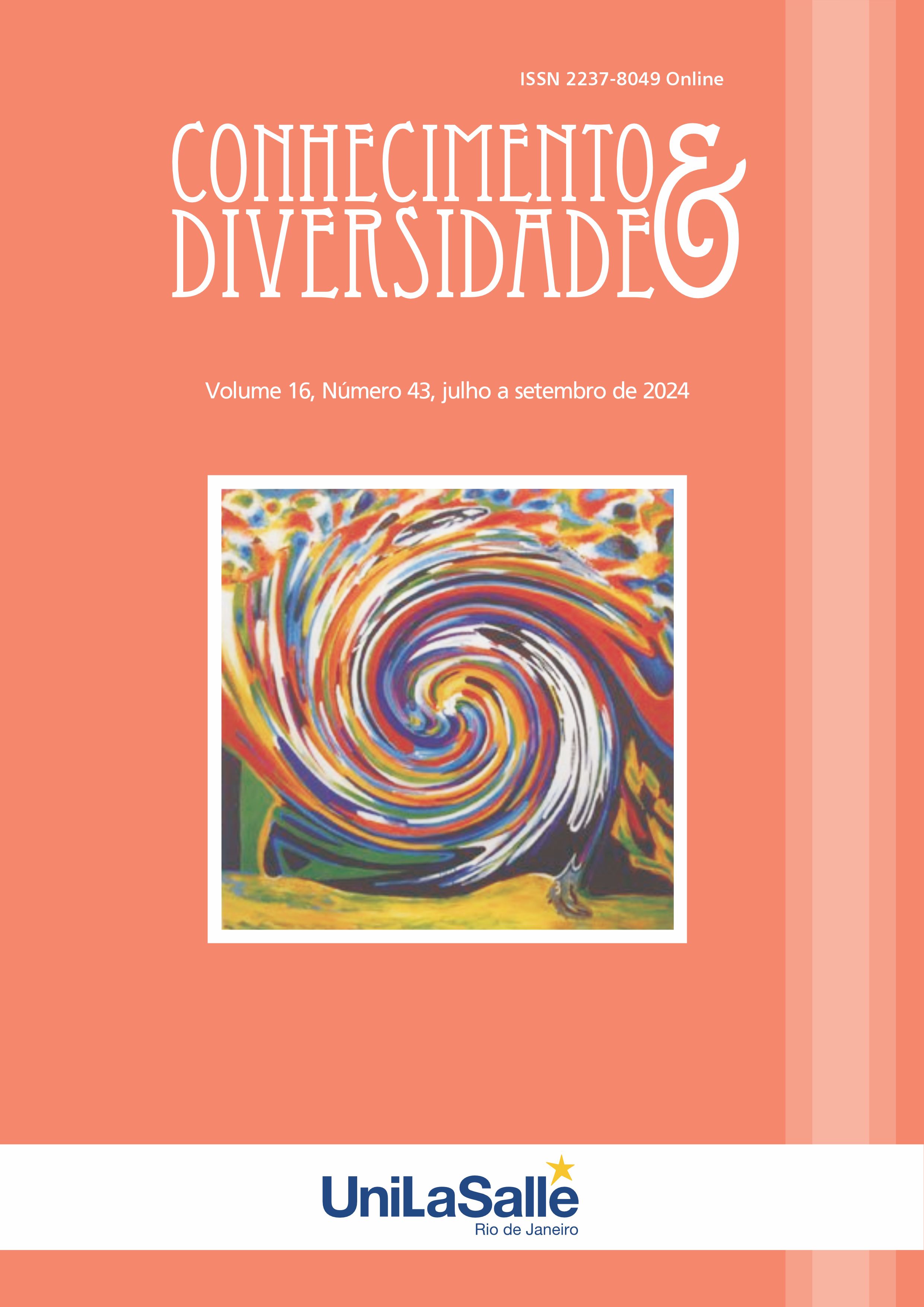A IMPORTÂNCIA DOS ALUNOS-ALVO NO ENSINO DE QUATRO HABILIDADES BÁSICAS DA LÍNGUA EM TURCO
DOI:
https://doi.org/10.18316/rcd.v16i43.11983Palavras-chave:
Idioma, Turco, Quatro habilidades básicas de idioma, Ensino de idiomasResumo
No mundo de hoje, ensinar turco para pessoas de diversas origens culturais e linguísticas se tornou essencial para uma comunicação eficaz. Fatores como língua nativa, objetivos de aprendizagem e habilidades cognitivas afetam o ritmo de aprendizagem de línguas. Recentemente, os alunos que vêm para a República Turca do Chipre do Norte (TRNC) de países do terceiro mundo para estudar demonstraram um interesse intenso em aprender a língua turca e, consequentemente, o turco começou a ser ensinado como língua estrangeira para esses alunos, tanto em universidades quanto em instituições privadas. Este estudo tem como objetivo determinar o ritmo de aprendizagem da língua turca de alunos estrangeiros que vieram para a TRNC para estudar na universidade. O estudo foi conduzido no semestre de outono do ano acadêmico de 2022-2023 com um total de 75 alunos aprendendo turco como língua estrangeira nas universidades da TRNC. Os participantes eram alunos de diferentes países, como Síria, Irã, Líbano, Líbia, Sudão, Nigéria, Congo, Paquistão, Azerbaijão, Palestina e Alemanha, estudando em vários departamentos da TRNC. Usando uma abordagem de método misto, o estudo empregou um projeto de pré-teste e pós-teste de um grupo. Os resultados mostraram que os alunos azerbaijanos tiveram as maiores pontuações em ambos os testes, os alunos iranianos e sírios fizeram progressos notáveis, e os alunos congoleses mostraram a menor melhora.
Referências
Balcı, M. & Melanlıoğlu, D. (2020). On The “Curriculum of Teaching Turkish as A Foreign Language”. Kırıkkale University Journal of Social Sciences, 10(2), 173-198.
Bogdan, R.C., & Biklen, S.K. (1992). Qualitative Research for Education: A İntroduction to Theory and Methods. Boston: Allyn and Bacon.
Boylu, E., & Çangal, Ö. (2019). The language needs analysis in teaching Turkish to foreigners: an example of Iran. International Journal of Language Academy, 2(5), 127-151.
Büyüköztürk, Ş., Kılıç Ç., E., Akgün, Ö., Karadeniz, Ş., & Demirel, F. (2021). Scientific research methods in education. (26. edition). Pegem Academy.
Çarkıt, C. (2024). Evaluation of Turkish Language Learning Experiences of African Origin Higer Education Students: A Phenomenology Study. Journal of Bayburt Education Faculty, 19 (41), 1593-1615. https://doi.org/10.35675/befdergi.1210406
Demirci, M. (2015). Determinations related to reading aloud skills of Syrian Turkish learning students in level B1. Journal of Turkish Studies. (s. 333-358).
Durukan, E., & Maden, S. (2013). Turkish teaching programme development for foreigners. Handbook of teaching Turkish to foreigners, 511-526.
Erol, T. (2021). Awareness of international students towards Turkey's intangible cultural heritage. RumeliDE Journal of Language and Literature Studies (23), 105-121. https://doi.org/10.29000/rumelide.948303
Gedik, D. (2009). Teaching Turkish to Foreigners. Sample of Ankara university and Gazi university. (Unpublished MA thesis). Abant İzzet Baysal University / Social Sciences Institute, Bolu.
İnan, K. (2014). An evaluation of the error analysis in the written expressions of Iranians who learn Turkish as a foreign language. Turkish Studies, 9, 619-619.
Karaman, E. (2015). An essay about how Azerbaijan students understand Turkish and Turkish students understand Azerbaijan Turkish. Selçuk University Journal of Literature Faculty (23), 23-35.
Karasar, N. (2002). Scientific Research Methods. (11. edition). Ankara: Nobel Publishing Distribution.
Nurlu, M. (2019). Teaching Turkish as a Foreign Language. Ankara.
Sönmez, V., & Alacapınar, F. G. (2013). Illustrated Scientific Research Methods. Anı Publishing. 2. edition. Ankara.
Tekin, T. (2013). Articles 2: The Writing System of Turkish Throughout History. Ankara: TDK Publications.
Tunagür, M. ve Kardaş, M. N. (2021). A Study on the Turkish Learning Experiences of Syrian Students (Aims and Problems in the Process). Social Sciences: Theory & Practice, 5(1), 120-136.
Yağmur, K. (2013). Concepts of mother tongue, second language and foreign language in language teaching. In “Teaching Turkish as a foreign language” handbook. (s. 181-198).
Yıldırım, A., & Simsek, H. (1999). Qualitative Research Methods in Social Sciences. 11. Edition.
Downloads
Publicado
Edição
Seção
Licença
Copyright (c) 2024 Tülay Kaya Tekman, Mustafa Yeniasır

Este trabalho está licenciado sob uma licença Creative Commons Attribution 4.0 International License.
Conforme recomendado pelo o Public Knowledge Project, a RCD adota para seus artigos uma licença CREATIVE COMMONS: Atribuição CC BY 4.0.
Esta licença permite que outros distribuam, remixem, adaptem e construam sobre o seu trabalho, mesmo comercialmente, desde que lhe dêem crédito pela criação original.
Esta é a licença mais adequada oferecida.
Recomendado para a máxima divulgação e uso de materiais licenciados.



